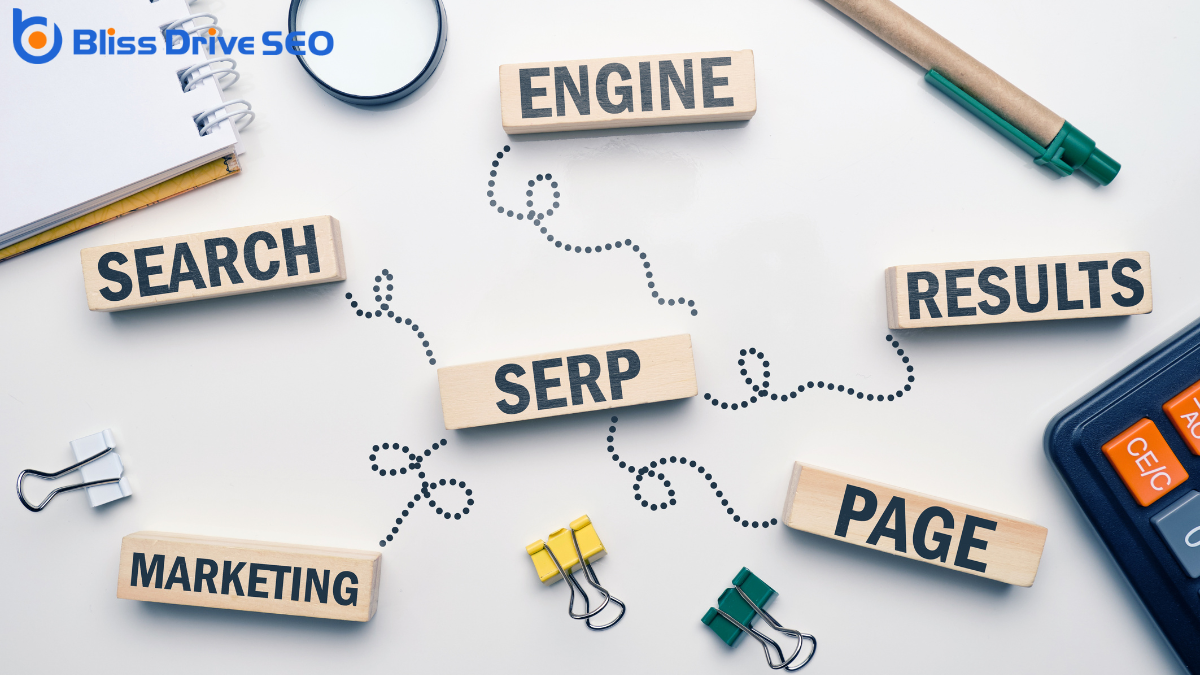Learn More About Us

You've probably come across the term SERP in your SEO research, but what does it really mean for your website's visibility? Search Engine Results Pages are where your efforts either pay off or fall short. They play a pivotal role in determining how your content is discovered by users. The mix of organic listings, paid ads, and various features like snippets and panels can seem overwhelming. So, how can you effectively navigate this digital landscape to boost your site's performance? Understanding the key components and their impact on SEO is just the beginning of this journey.
To truly grasp the essence of SEO, understanding the basics of SERP, or Search Engine Results Pages, is fundamental. Imagine you've just typed a query into a search engine. The page that appears is the SERP, displaying results that the search engine deems most relevant to your query. It's the battleground where websites compete for visibility. Your goal is to make your content appear as high as possible on this page, increasing the chances that users will click through to your site.
SERPs are dynamic and tailored to each search. Factors like your location, search history, and even the device you're using can influence the results you see. It's not just about organic listings; SERPs can include paid ads, featured snippets, and local results, all competing for attention. Understanding these nuances gives you a competitive edge.
When you comprehend how SERPs function, you can better tailor your content to meet the needs of both search engines and users. You'll know what elements to optimize, ensuring your website is more likely to be found. This understanding is vital for driving traffic and achieving your SEO goals.

Having grasped the basics of SERP, it's time to explore its key components. When you search for something online, the SERP is where the magic happens. It's not just a list of links anymore. Instead, it's a vibrant canvas filled with various features designed to enhance user experience and deliver information quickly.
First, you'll notice the organic search results. These are the traditional listings that appear due to SEO efforts, and they're ranked based on relevance and authority.
Then there are paid ads, usually at the top or bottom, marked with an "Ad" label. These spots are bought through platforms like Google Ads.
Next, keep an eye out for featured snippets. These are concise answers displayed at the top of the results, often referred to as "Position Zero." They aim to answer your query directly on the SERP, saving you a click.
You might also encounter knowledge panels, which provide quick facts about a topic.
Beyond the surface, understanding how search engine results page (SERP) impacts search engine optimization (SEO) is crucial for anyone looking to enhance their online presence. SERPs, or search engine results pages, are the battlegrounds where your website competes for visibility. When you optimize for SEO, your goal is to appear prominently on these pages. The higher your position on a SERP, the more likely users will click through to your site, increasing traffic and potential conversions.
SERP features such as snippets, local packs, and knowledge panels can greatly influence your visibility. By optimizing content to target these features, you can enhance your chances of appearing at the top of search results. This means using structured data, crafting concise answers to common questions, and maintaining up-to-date business information.
Additionally, user behavior on SERPs can offerThe specific product or service being promoted by affiliates. valuable insights into the effectiveness of your SEO strategy. Analyzing metrics like click-through rates and bounce rates helps you understand what content resonates with your audience and where improvements are needed.

When comparing organic to paid results, you'll notice key differences in how each impacts your site's visibility.
Organic results are driven by SEO strategies, while paid results involve advertising costs that influence their placement on SERPs.
Understanding these differences helps you analyze cost-effectiveness and potential ROI for your specific goals.
Why do organic and paid results play such distinct roles in the search engine results pages (SERPs)? Understanding the main disparities between them is essential for anyone looking to enhance their online presence.
Organic results are the listings that appear naturally based on how well a page's content matches a user's search query. They're determined by algorithms that consider factors like relevance, quality, and authority. You can't pay for these spots, which makes them highly trusted by users.
On the other hand, paid results are advertisements. You pay for these positions through a system like Google Ads. Paid results are usually marked as "Ad" and appear at the top or bottom of the SERP. They offer immediate visibility but at a cost. Unlike organic results, paid ads allow you to target specific demographics and keywordsWords or phrases that users type into search engines to find information., giving you control over who sees your ad.
The main distinction lies in cost and trust. While organic results require time and effort to climb the rankingsThe position at which a website appears in the SERP., they build credibility. Paid results offer quick visibility but need ongoing investment. By understanding these differences, you can make informed decisions about which approach aligns best with your goals.
Having explored the key differences between organic and paid results, it's essential to consider how each influences visibility on the search engine results pages.
Organic results stem from the natural algorithm of search engines, offering long-term visibility without ongoing payments. They're considered trustworthy by users, often leading to higher click-through rates. However, achieving top organic spots requires time and consistent effort in optimizing your content.
Conversely, paid results appear at the top of the search results page, marked as ads. This positioning guarantees immediate visibility, which can be particularly beneficial for time-sensitive promotions or new businesses looking to gain quick traction. With paid results, you've got control over when and where your ads appear, allowing for precise targeting. But remember, once you stop paying, your visibility vanishes.
Balancing both strategies can maximize your visibility. Focusing solely on organic might take longer to see results, but it builds authority and trust. On the other hand, relying only on paid results can be expensive over time. By understanding the impact of each, you can create a strategy that effectively optimizes your presence on search engine results pages.
How do you determine which strategy offers a better return on investment: organic or paid searchAdvertising on search engines, where advertisers pay to have their ads appear in search results. results? To make an informed decision, you should analyze both the costs and potential returns of each.
Organic search results are generally free, requiring time and effort to develop quality content and optimize your website for search engines. In contrast, paid search results involve upfront costs for ad placementsSpecific websites or locations within websites where ads can appear., but they can deliver immediate visibility.
Here are three key factors to keep in mind when comparing organic and paid search strategies:

SERP features are the enhanced results you see on search engine results pages that go beyond the standard blue link listings. These features aim to provide you with quick, relevant information without needing to click through to a website. Understanding these features can help you grasp how search engines like Google work to improve user experience.
Common SERP features include rich snippetsEnhanced search results featuring extra information like ratings or images., knowledge panels, and local packs. Rich snippets offer extra details like star ratings, product prices, or cooking times, making search results more informative at a glance.
Knowledge panels provide a snapshot of information on a topic, typically appearing on the right side of search results, often for well-known people, places, or things. Local packs show a map with local business listings, allowing you to find nearby services quickly.
There are also features like featured snippets, which pull the most relevant part of a webpage to answer your query directly at the top of the results. Video carousels, image packs, and sitelinks are other examples, each tailored to different types of searches. By familiarizing yourself with these features, you'll better understand how search engines prioritize content and display it.
To effectively enhance your website's visibility on search engine results pages, several key strategies can be employed.
First, focus on keyword optimization. It's essential to use relevant keywords that align with your audience's search queries. Research and identify terms that are both popular and specific to your nicheA specific segment of the market targeted by affiliates to promote products or services.. Placing these strategically throughout your content helps search engines understand your page's relevance.
Second, make sure your content is high-quality and engaging. Search engines prioritize pages that provide value to users. Regularly update your content to keep it fresh and informative. Use clear, concise language and incorporate multimedia elements like images and videos to enrich the user experience.
Third, leverage on-page SEOOptimization techniques performed directly on the website, including content and HTML source code. techniques. This includes optimizing your meta tagsHTML tags that provide information about a web page to search engines and visitors., headers, and URLs to enhance search engine understanding. Confirm that your website is mobile-friendly and loads quickly to improve user satisfaction and reduce bounce rates.
Here's a quick rundown of these strategies:

When you're analyzing SERP changes, it's important to track algorithm updatesChanges made by search engines to their ranking algorithms. to understand their impact on your ranking strategies. These changes can greatly affect your site's visibility, so you'll need to adapt quickly to maintain your position.
Google's ever-evolving algorithm keeps SEO specialists on their toes, and tracking these updates is crucial for staying competitive in search engine rankings. When Google rolls out changes, it can shake up the search engine results pages (SERPs) dramatically. By staying informed, you can quickly adapt your strategies and maintain your site's visibility. Here's how you can effectively track these updates:
Understanding algorithm updates is just the beginning; the real challenge lies in adapting your ranking strategies to the evolving landscape of search engine results pages (SERPs). When you analyze SERP changes, you're not just looking at what's currently ranking but also why and how these shifts occur. This insight helps you refine your SEO tactics, guaranteeing they align with current search trends and user intent.
SERP analysis involves examining factors like featured snippets, local packs, and organic listings. By understanding these elements, you can tailor your content to match what search engines prioritize.
For instance, if you notice an increase in video content appearing in your niche's SERPs, it might be time to invest in video SEOOptimizing videos to improve visibility and rankings in search engines..
You should focus on user experience metrics, like page loading speed and mobile-friendliness, as they significantly impact rankings. Search engines are increasingly valuing these aspects, and ignoring them could hurt your visibility.
Moreover, keep an eye on competitors. Analyzing their strategies can offer valuable insights into what's working in your industry. By staying agile and informed, you can guarantee your content remains relevant and competitive, maintaining your edge in the ever-changing SERP environment.
Maneuvering the dynamic nature of SERP fluctuations necessitates a proactive approach and keen analytical skills. You need to stay on top of changes by consistently monitoring SERP trends. This means keeping an eye on keyword performance and understanding how algorithm updates may impact your rankings. Adaptability is key, as search engines constantly refine their methods to provide better user experiences.
To effectively adapt to SERP fluctuations, consider these steps:

To effectively navigate the dynamic landscape of search engine results pages (SERPs), leveraging the right tools for SERP analysis is vital. They help you understand where your website stands and how you can improve your rankings.
One popular tool is SEMrush, which offers insights into keyword rankings, competitor analysis, and SERP features like snippets and FAQs. It helps you identify the keywords driving traffic and those needing attention.
Another powerful tool is Ahrefs, which is known for its robust backlink analysis. With Ahrefs, you can explore the top-performing pages and understand how competitors rank. This knowledge is essential when devising strategies to overtake them.
Moz Pro is also valuable, providing keyword tracking, site audits, and optimization suggestions.
For a more visual approach, consider using SERPstat. It offers a complete dashboardA user interface that organizes and presents information in an easy-to-read format, typically showin... that displays keyword trends and competitor data in an easily digestible format.
Google Search ConsoleA tool by Google that helps monitor and maintain your site's presence in search results., though basic, is essential for monitoring your website's health in Google's search results.
Each of these tools has unique strengths. By using them, you gain a clearer picture of your SERP standing and can make informed decisions to enhance your SEO strategy effectively.
In mastering SERP dynamics, you empower your website to stand out in the crowded digital landscape. By focusing on optimizing content, keywords, and user experience, you can align with key SERP components and boost your site's visibility. Understanding the balance between organic and paid results, leveraging SERP features, and staying informed about SERP changes will help you attract valuable clicks and drive conversions. Use available tools for analysis, and you'll be well-equipped to enhance your online presence.
